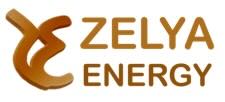The net cash flow method, also referred to by the English term Discounted Cash Flow (DCF), is widely accepted in the field of asset valuation (company, project, or portfolio) due to its solid theoretical foundations.
It financially translates that an asset "is worth what it brings in".
In the present case, this method consists of calculating, by discounting, the net present value of future cash flows generated by the operation. One of the main attractions of this method is to highlight all the assumptions underlying a valuation (growth, profitability, investments) over a cycle corresponding to the real life of the asset.
Fundamental Formula
In this approach, the company value (EV) corresponds to the sum of its projected available cash flows discounted at the Weighted Average Cost of Capital (WACC or WACC in English):

With:
- EV: Enterprise value;
- CFi: net cash flow (free cash flow) generated each future year by the operation;
- WACC: Weighted Average Cost of Capital;
- VT: terminal value;
- VD: net financial indebtedness value.
- the estimation of production (or future volumes transported): this factor is essential in determining future revenue, assessing its variability and predictability. Thus, it is necessary to have precise measures of production or robust forecasts of consumption and transportation of gas or electricity to obtain the best possible results.
- the estimation of Opex and, in particular:
- maintenance and operation charges: in most cases, some assets present standard costs of maintenance; O&M contracts signed with manufacturers or subcontractors are also, most often, good indicators to estimate the value of operation charges
- taxes and royalties: in some sectors - such as hydroelectricity - taxes represent a significant part of the Opex of the considered asset. A fair evaluation of what the operator will have to pay in terms of concession royalties, taxes, and duties is therefore also essential
- the estimation of Capex and amortizations, based on the investment plans of the evaluated companies: this phase requires both a critical analysis of the projected investment plans or estimating them based on sector and professional ratios.
- the estimation of the weighted average cost of capital applicable - as a discount rate - to the company's future cash flows. Estimating each of the parameters that compose it is a complex exercise as soon as it is undertaken with a level of rigor commensurate with the stakes. In practice, financial analysts tend to overlook this calculation to communicate essentially on the various developments likely to affect forecasted cash flows. The most common approach to calculating the parameters of the WACC applicable to our key sectors is to estimate its value by reference to samples of listed companies in the same sector (gas, renewable, electricity...) or recent transactions. This allows obtaining indicative value ranges, representative of investors' risk perception in these sectors.
Our services
With their experience in valuing networks and power generation plants, the financial experts at Zelya Energy carry out the valuation of assets, projects, and companies in the energy sector using the DCF method, taking into account the specifics of this sector.
Our methodology also adapts to multi-energy asset and project portfolios (biomass, hydraulic, wind, geothermal, thermal, solar, etc.) as well as integrated companies (networks and production plants).







